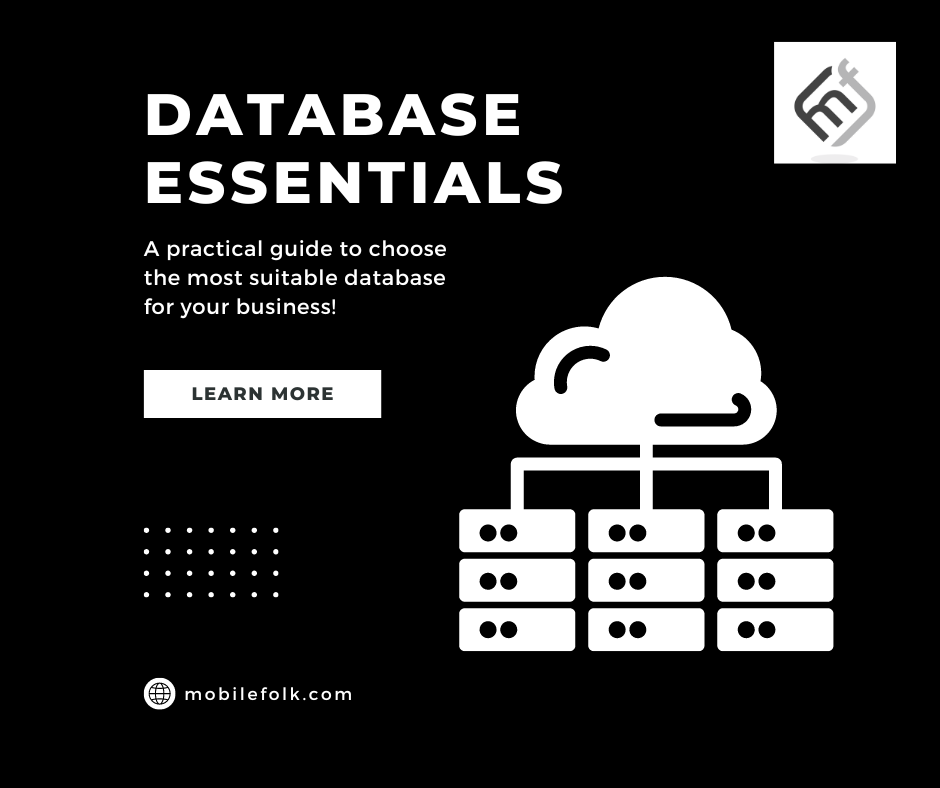 Back To Blog
Back To Blog
Database essentials – A practical guide to choosing your most suitable database
BY MobileFolk
09.11.2022 | 2 mins
Selecting a suitable database contributes significantly to the success of an application and the business. You may wonder how you can choose the most effective and suitable database for your business. Here’s how!
Selecting a suitable database contributes significantly to the success of an application and the business. The most practical strategy is to consider the needs and primary function of the database rather than relying on vendor advice or utilizing a database simply because you currently have one.

Start by posing a few points, such as the peak data volume, how many people would be using the database, and the availability, latency, scalability, consistency, and throughput needs. Additionally, you must consider if the application requires online transaction processing (OLTP), analytic query (OLAP), or both, as well as the geographic distribution of users and the frequency of data schema changes. Finally, consider any legal limitations on data storage.
Some other business elements to consider while choosing a database and prioritizing essential ones for your company.
- Usability
- Reporting & Visualization
- Security
- Data extraction and filtering
- grouping and modeling
- Automation
- Services & Development
- Integration
- Scalability
- There is no one method for choosing a database that fits your needs; it’s for you to identify which ones suit your needs the best, though below are some guidelines you should always regard.
- Recognize the data structure(s) you need, the volume of data you need to store or retrieve, and the speed/scaling needs.
- Analyze your data using a model to decide whether a relational, document, columnar, key/value or graph database is the best choice for your information.
- Review the available alternatives: When choosing the storage mechanisms for your workload, consider the services and storage alternatives offered.
- Consider factors like the reads-to-writes ratio and the throughput you’ll need to handle reads and writes while modeling.
- It would be best if you utilized numerous databases to handle data in various settings and usage patterns.
- A master database should always be used to store and retrieve canonical data. One or more auxiliary databases should be used to facilitate search, data pipeline processing, and caching, among other features.
Some databases are accessible for free, and there are several premium versions; your budget is essential when choosing a database—so specify your budget before you start researching a database.



